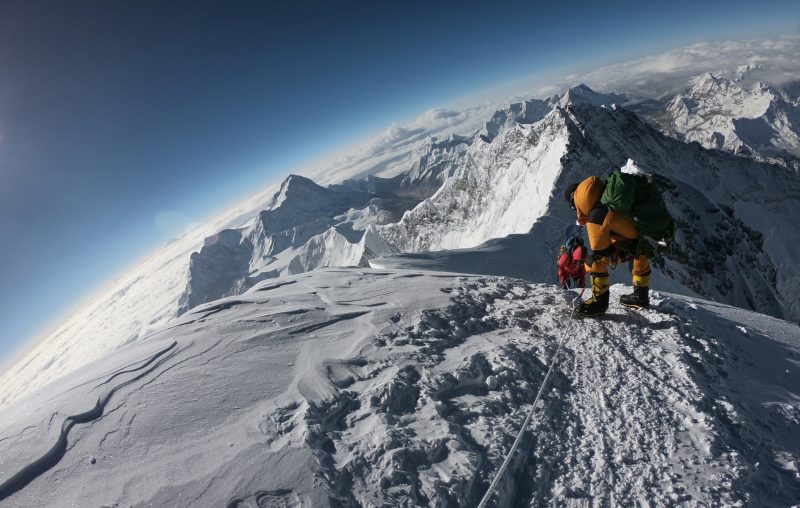Everest summits smash records amid deadly bottlenecks
A short weather window resulted in fatal bottlenecks to Everest’s peak in 2019 (Phunjo LAMA)
Kathmandu (AFP) – A record 885 people climbed Everest in May this year, figures showed Tuesday, capping a deadly traffic-clogged season that also saw 11 climbers die on the world’s highest mountain.
The number smashed last year’s record of 807 summits despite a short weather window that resulted in fatal bottlenecks on the peak.
Everest — which straddles the border between Nepal and China — saw 644 people summit from the south, authorities confirmed Tuesday, 81 more than last year.
Another 241 reached the top from the northern flank in Tibet, China’s official Xinhua news agency reported, three fewer than last year.
At least four of the deaths this season — the deadliest since 2015 when massive earthquakes triggered avalanches that swept away climbers’ camps — have been blamed on overcrowding.
A traffic jam forced teams to wait for hours in freezing temperatures to reach Everest’s 8,848-metre (29,029-foot) summit and then descend, increasing the risk of frostbite, altitude sickness and exhaustion from depleted oxygen levels.
Experts said too many of the new wave of mountaineer tourists were ill-prepared and inexperienced. Others have called for a cut in the number of climbing permits, or tougher standards for guides.
Mountaineering in cash-strapped Nepal has become a lucrative business since Edmund Hillary and Tenzing Norgay made the first ascent of Everest in 1953.
But under pressure, Nepal has formed a committee to recommend changes to its regulations and rules.
“All issues will be looked into to make the mountain safer, safeguard the jobs and to keep the mountaineering industry clean,” Dandu Raj Ghimire, chief of Nepal’s Tourism Department, told AFP.
This year saw Nepali guide Kami Rita Sherpa climb Everest twice to set a new record of 24 summits.
In another record, South African climber Saray Khumalo became the first black African woman to reach the mountain’s peak.
A team led by National Geographic installed two weather stations on Everest at 8,430 metres and 7,945 metres, making them the highest in the world.
“We will fill critical data gaps on the world’s life support systems and drive solutions to assure that they can continue to fuel our future,” Jonathan Baillie, executive vice president and chief scientist at the National Geographic Society, said in a statement.
A government team re-measuring the height of Everest also reached the top.
Disclaimer: Validity of the above story is for 7 Days from original date of publishing. Source: AFP.


